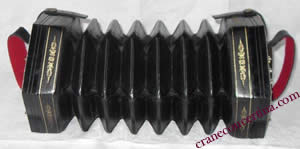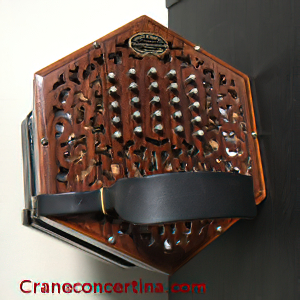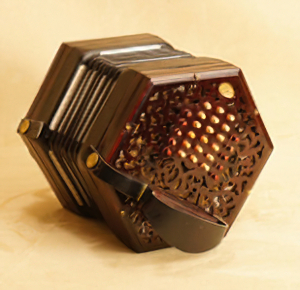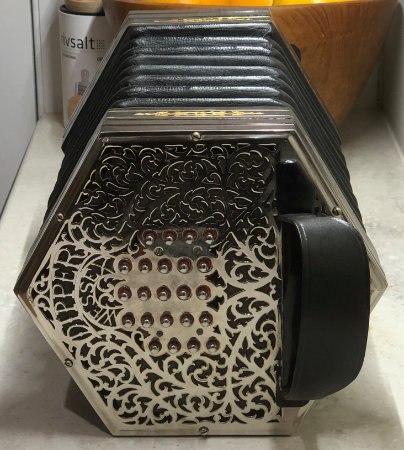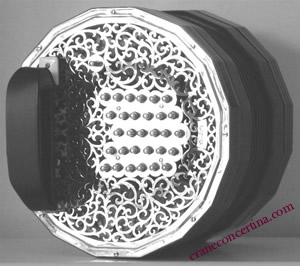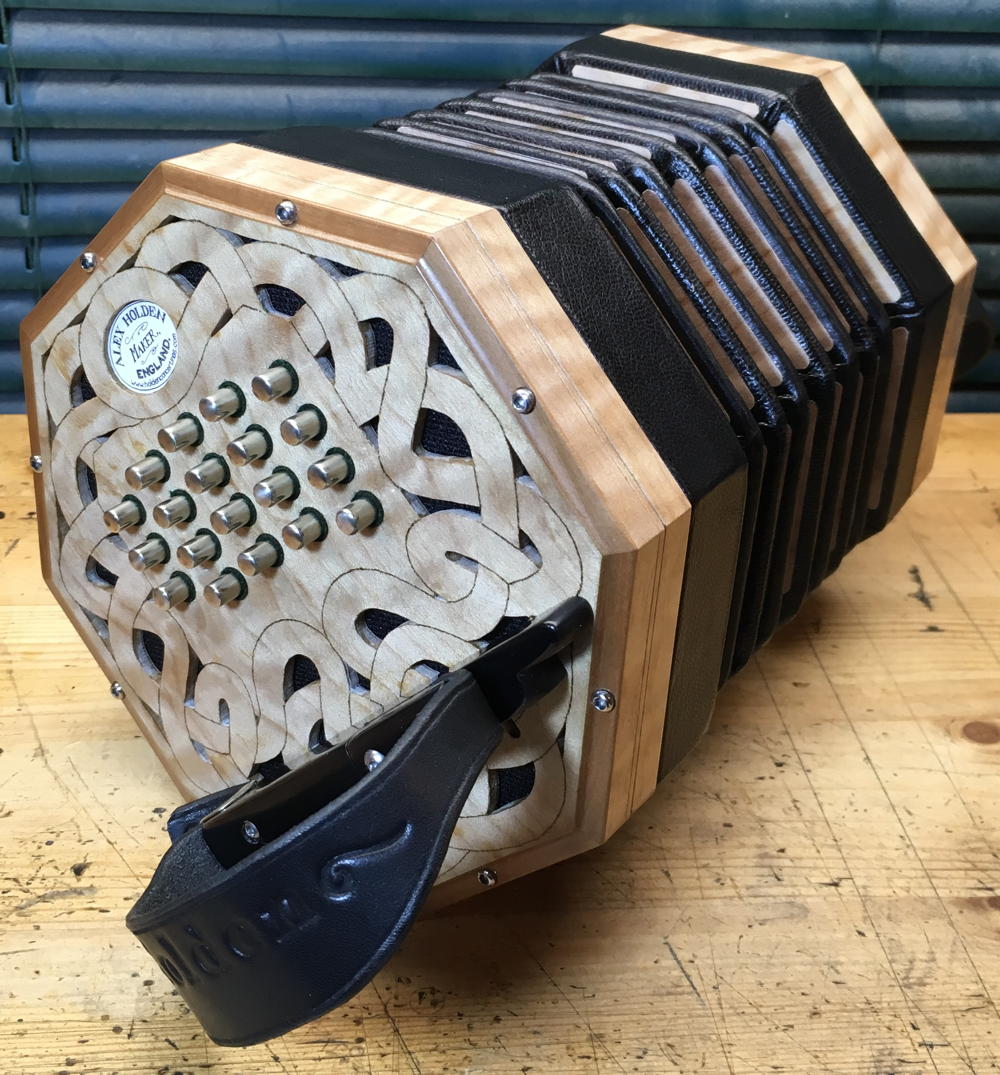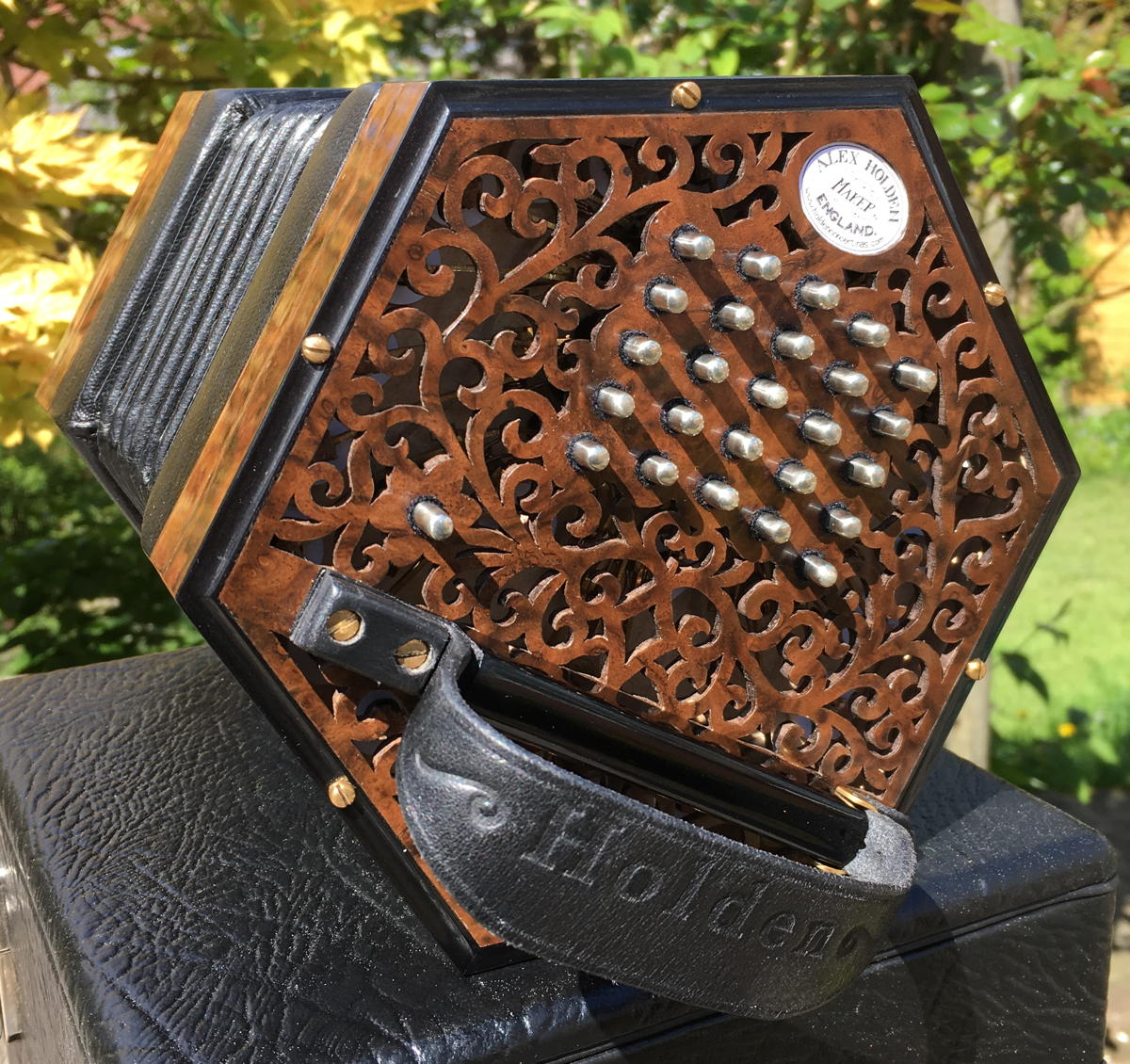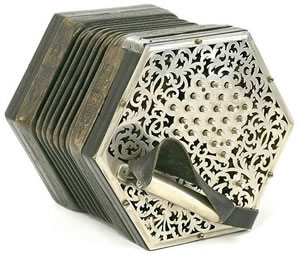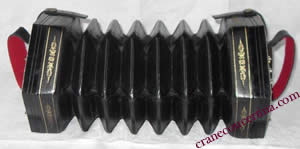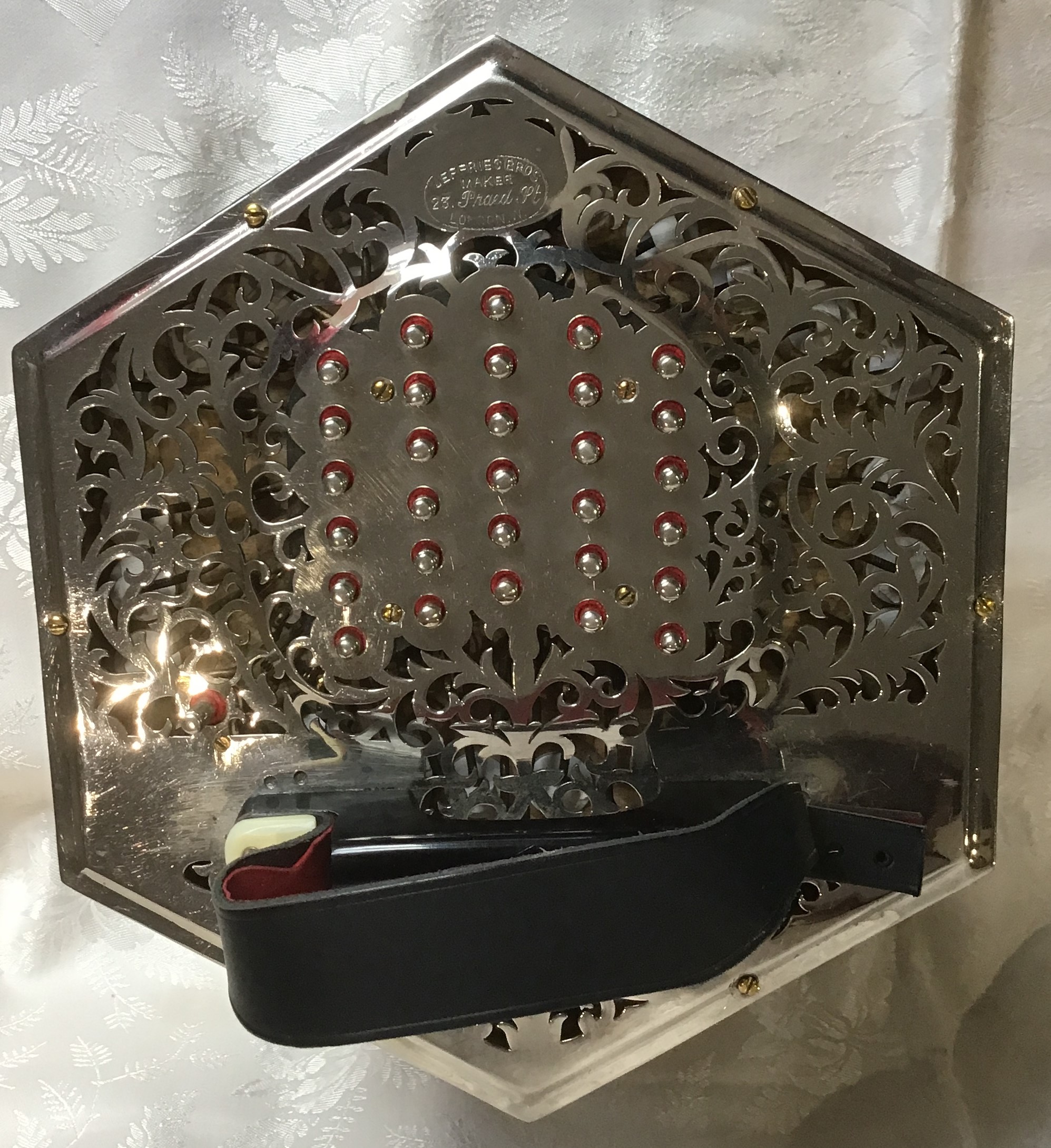Made by Henry Crabb. Octagonal, metal ends, metal buttons, 8 fold bellows. Dated by Geoff Crabb to 10th Sept 1941, the last instrument to be made until Oct 1943 due to the war.
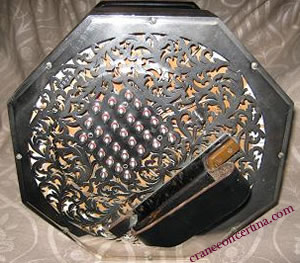
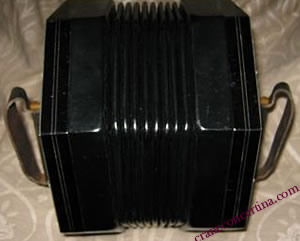
Crane & Sons 150
Crane & Sons 262
Dipper 85092 (1985)
Maker :Dipper
Year: 1985
Serial Number: 85092
Buttons: 51
Owner: Paul Hurst
Country: UK
Special Crane system instrument of 51 keys. New instrument to special order, having 51 keys 6.5″ in size. Long stretch 7-fold bellows, narrow gold tooling. Best reeds in brass frames. Best black ebony on hornbeam with Honduras mahogany action board. Best brass riveted action, stainless steel capped lightweight buttons, slightly raised handbars.
“I should also mention that it’s not quite standard. From the outset I asked for Bb2 in place of C#3 on the LHS (useful for song accompaniment). That now has an anglo button playing G2 on pull and B2 on push – great for tunes in G. (The Bb reed is a spare if you want to swap it round.) Later I had one Eb3 reed tuned down to A2. On the right I have the push C#4 playing B3. All this was done by Dipper. The reeds were weighted at the tip so it is all easily reversible by a competent tuner…”
Click here for a button layout, which was designed by the original owner, John Thornton.

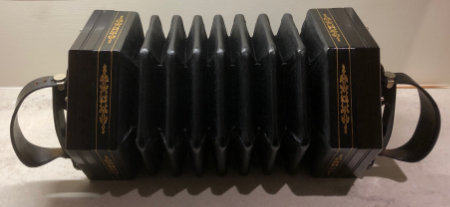
G. Crabb 1 (1976)
Made by Geoff Crabb, this is probably the only 16 sided instrument ever made.
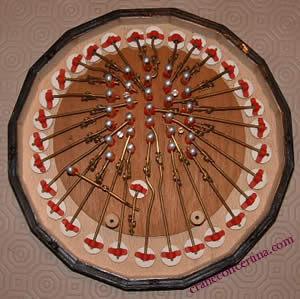
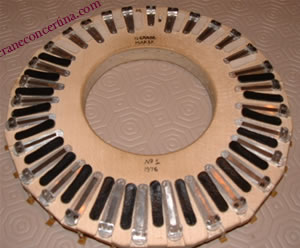
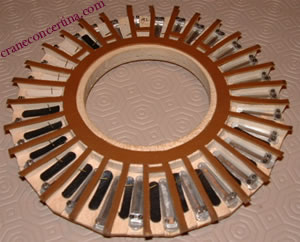
Holden 3 (2019)
45 buttons + air release. Eight sides, 6 1/4″ wide. Weight 1135g. Figured maple action boxes and end plates with applewood borders. Nickel silver capped buttons, brass action levers, steel reeds in aluminium frames. End plate design by Nina Dietrich.
Click for large view of button layout.

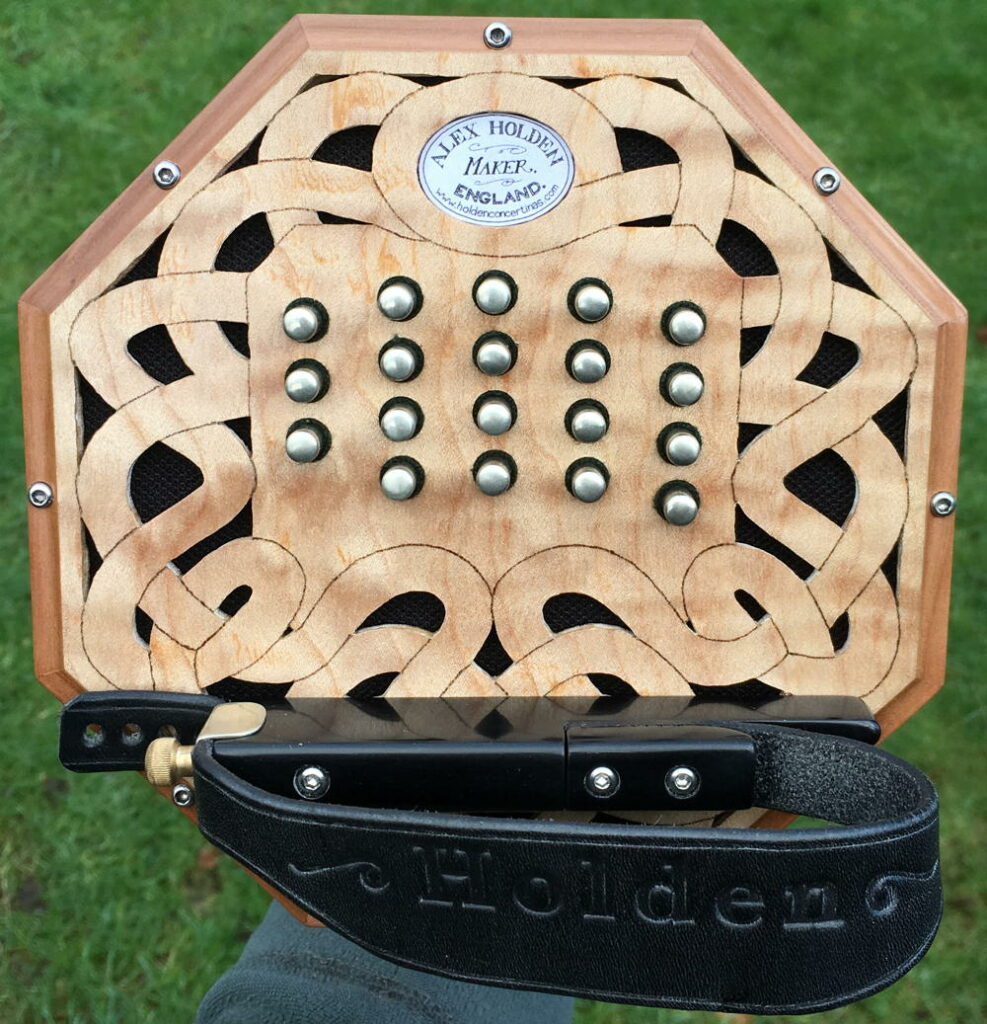
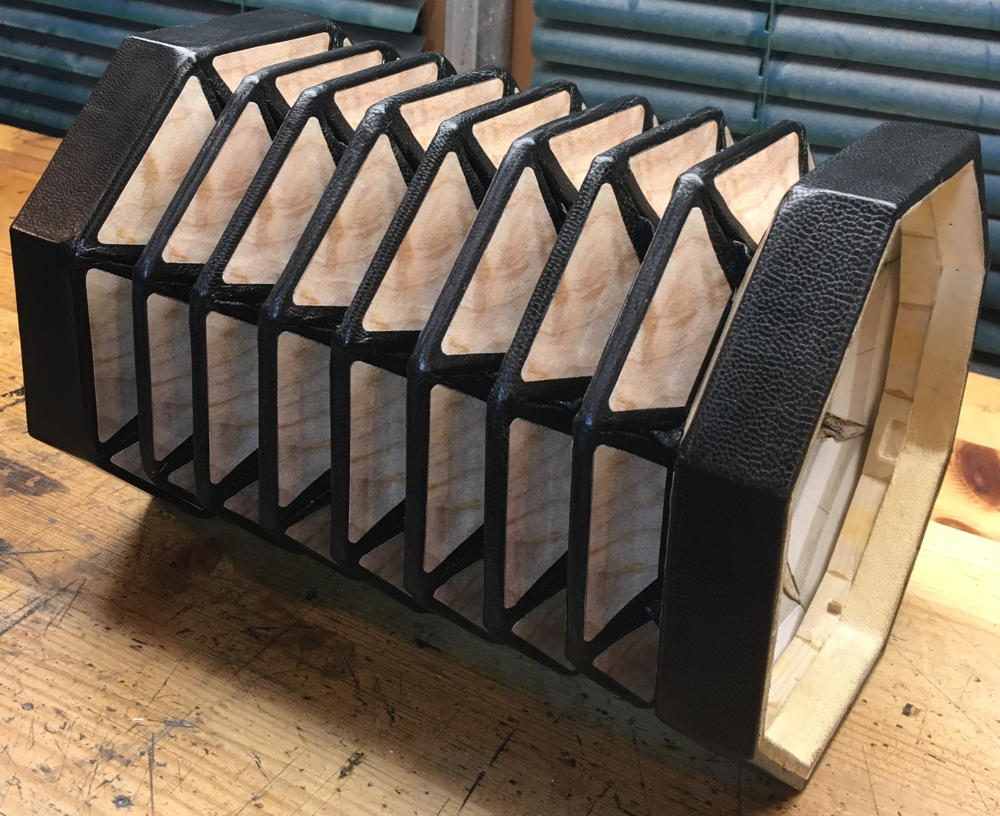

Holden 4 (2019)
Maker :Holden
Year: 2019
Serial Number: 4
Buttons: 44
Owner: John Thornton
Country: United Kingdom
44 buttons + air. 6 1/4″ wide, six sides. Weight 1170g. Walnut burr action boxes and end plates. Nickel silver capped 3/16″ diameter buttons, brass action levers, steel reeds in aluminium frames. 1/5 comma meantone tuning. Four non-standard buttons extend the range downwards (see button layout diagram drawn by Paul Hurst).
Click for large view of button layout.
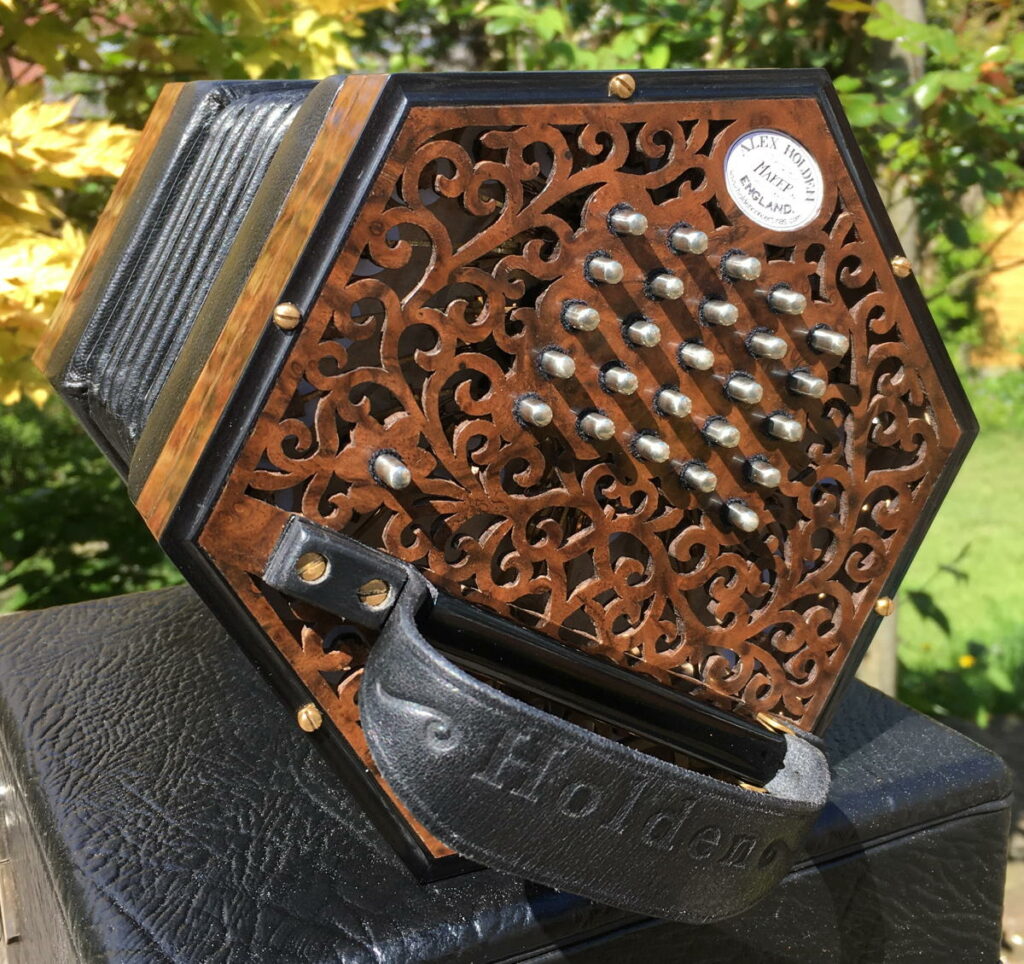
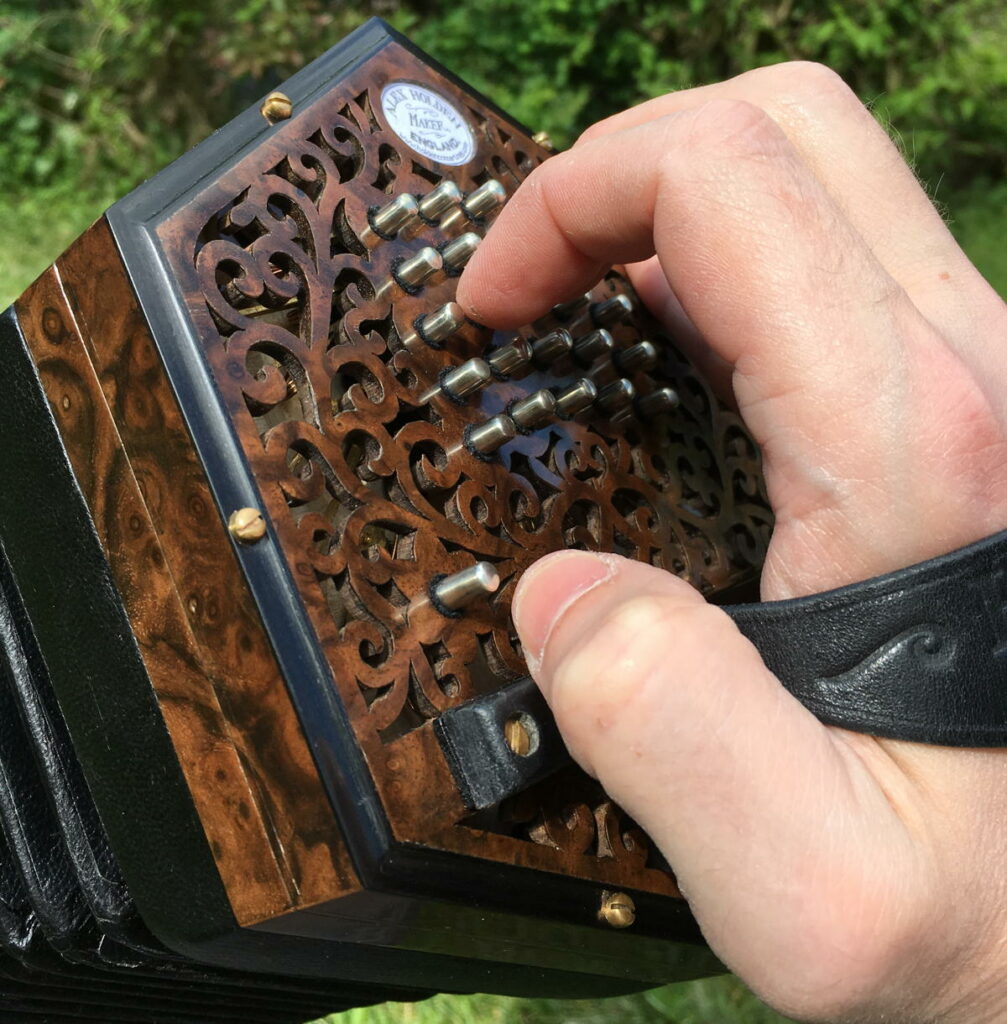
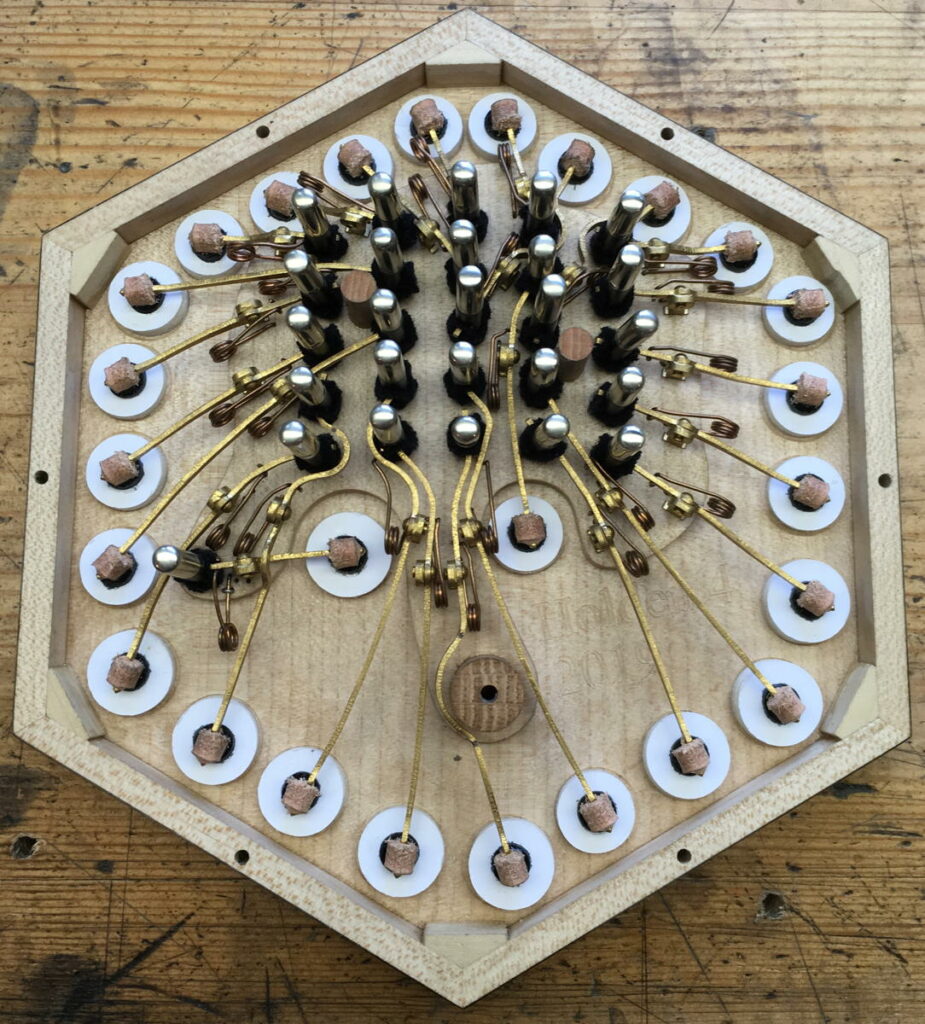
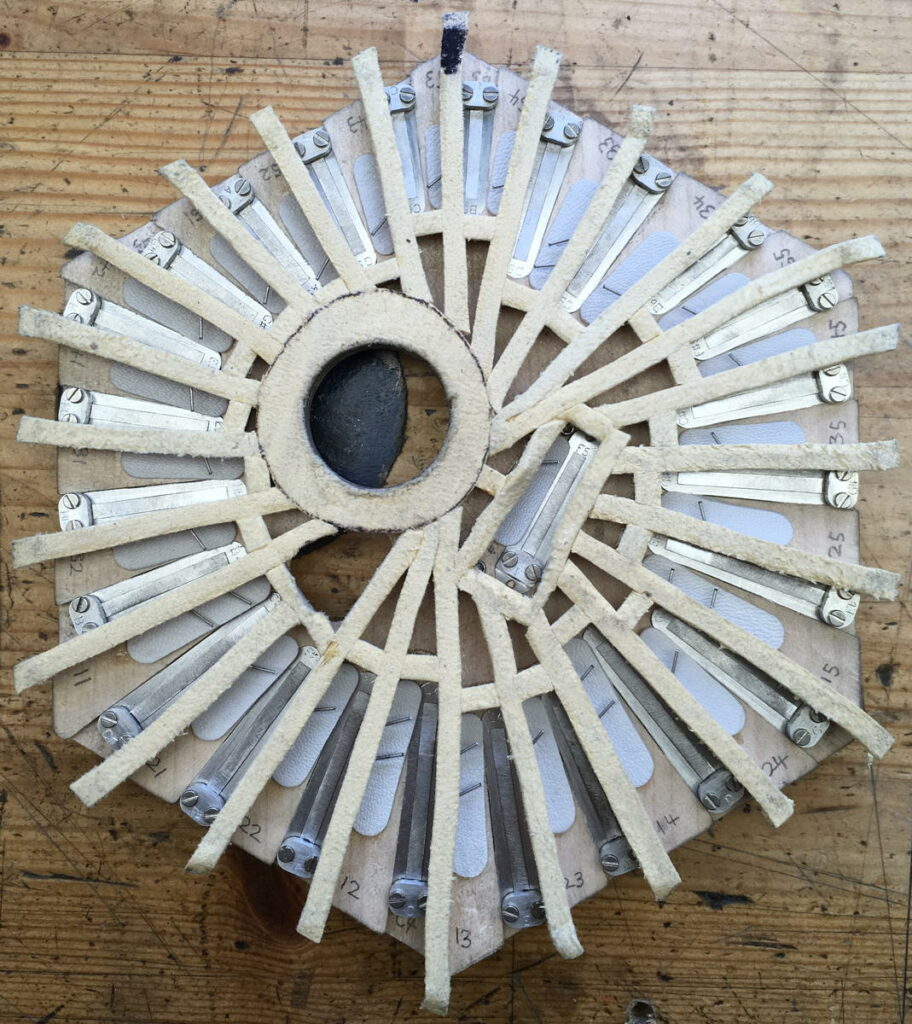
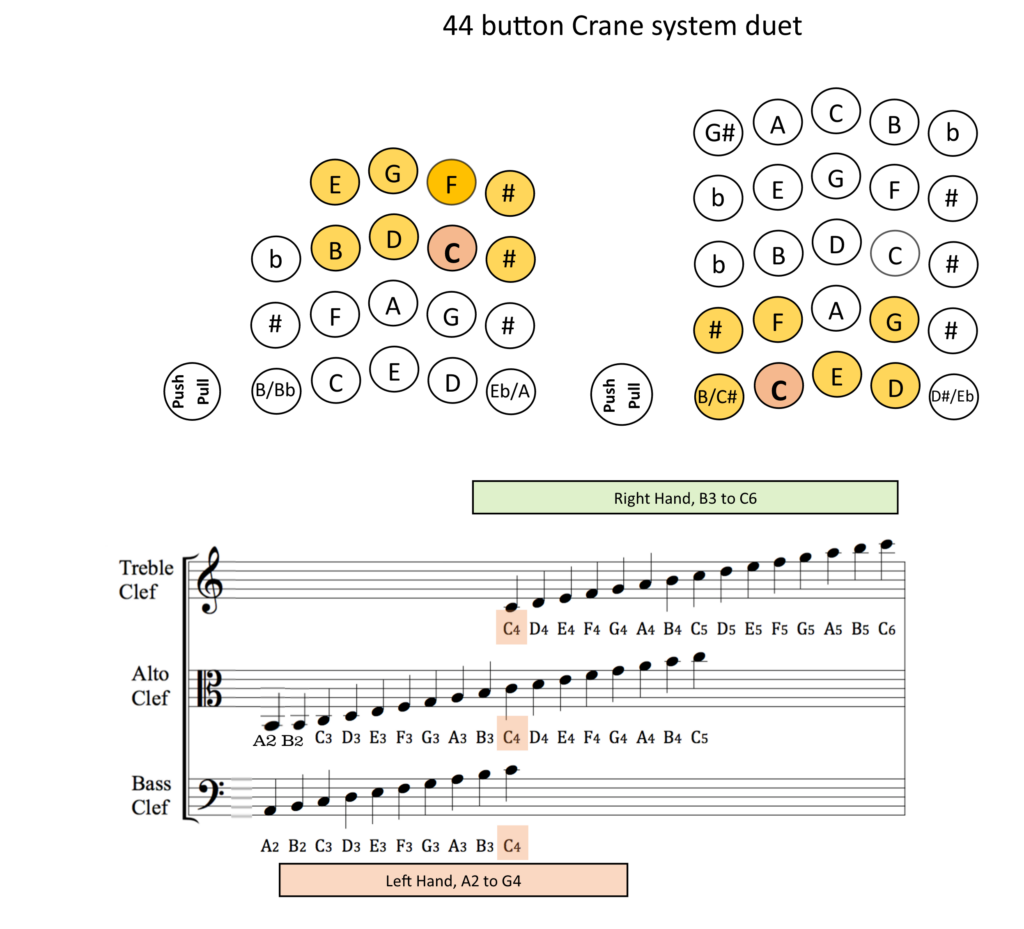
J. Crabb 0 (c1900)
This concertina appeared at auction in 2014. The following comments are from Geoff Crabb – There should be no doubt that it is of Crabb manufacture and if inscribed J Crabb & Son either on the single cartouche (right side) or inside, then it would have been made between 1896 (Butterworth Patent date) and 1908 (business name changed to H Crabb). A four digit internal ID number, if present, would indicate the actual date from the records. In comparison with Crane models available from other makers at this time, this may have been one of the earliest examples, if not the earliest, with this number of keys (60 + wind key). It will be seen that the Crabb narrow chevron layout of the keys, which differed from the Butterworth/Lachenal wider curved arrangement, was already being employed. The number of keys, the presence of the left side odd outrigger key and thumb key, the elaborate fretwork and gilded bellows suggest that, like all Crabb Crane duets above 55 keys, the instrument would have been built to meet an individual customers requirement. Whilst many Crabb Crane Duets do exist, it is extremely rare to come across one with the J Crabb name.
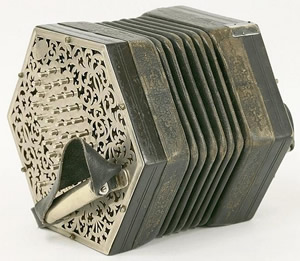
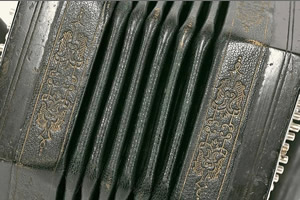
Jeffries
Nickel-plated nickel-silver, metal buttons,6-fold bellows. One end stamped C.Jeffries, 23 praed St. with a “double hit” stamp. This is a very loud concertina!
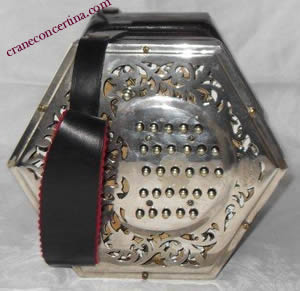
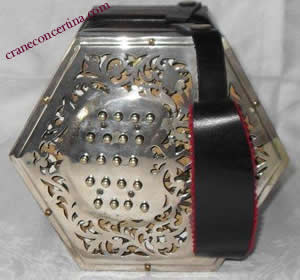
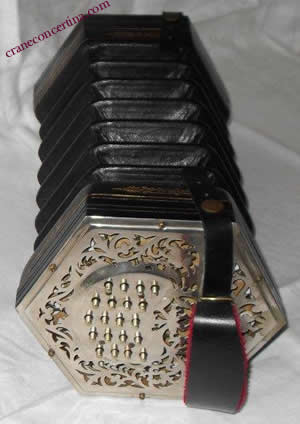
Jeffries 0
Maker :Jeffries
Year:
Serial Number: 0
Buttons: 55
Owner: Peter Smith
Country: Wales
My 55 button Jeffries Crane was made in the 23, Praed Street period. It needed quite a bit of professional ‘tlc’ to get it playing well, and around 20 of the reeds are not Jeffries reeds. The concertina is heavy (2.35kg) but it is a joy to play & not too loud. The air button on the right-hand side was added by Andrew Norman.
